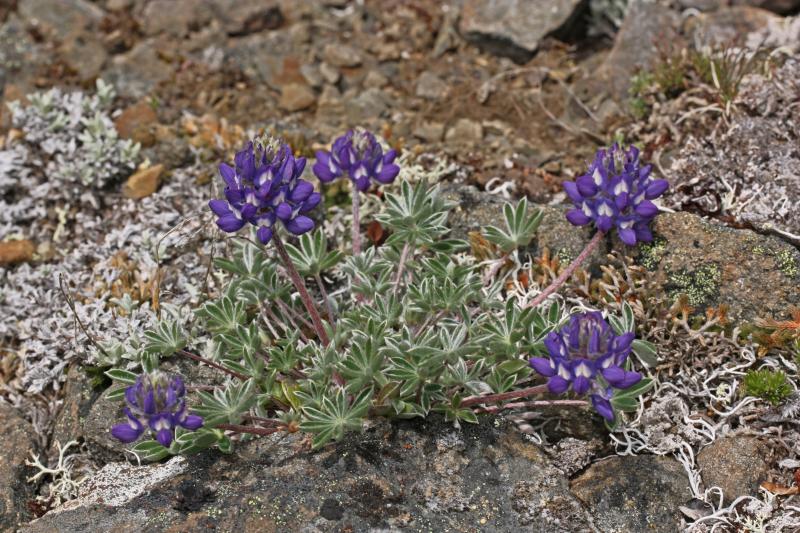- Series:Plants, Transcript English
Luke 12:27a
Consider the lilies how they grow: they toil not, they spin not;
The remarkable recovery of flora and fauna around Mount St Helens, since the devastating eruption of 1980, was aided in large measure by a seemingly insignificant little plant, called the Prairie Lupine. It grows no taller than 24 inches, but is usually much smaller, with tiny blue flowers. Today, it grows in abundance in the areas most affected by the eruption and landslide.
 Like all lupines, it is a legume. This means that it makes its own nitrogen compounds – an essential mineral for plants to grow. We say that it fixes nitrogen. The volcanic soil is deficient in this mineral, so the value of the plant is obvious, as it fixes more than enough for itself, and provides extra nitrogen for other, neighboring plants.
Like all lupines, it is a legume. This means that it makes its own nitrogen compounds – an essential mineral for plants to grow. We say that it fixes nitrogen. The volcanic soil is deficient in this mineral, so the value of the plant is obvious, as it fixes more than enough for itself, and provides extra nitrogen for other, neighboring plants.
To be exact, it is not the plant itself that does the fixing. This is done by soil bacteria, called rhizobia, which reside in nodules in the roots of the lupine. What is even more interesting is that these bacteria cannot fix nitrogen, without attaching themselves to a suitable host plant, such as the lupine. So, the lupine needs the rhizobia, and the rhizobia need the lupine. This interdependency is known as a symbiotic relationship. A problem for the evolutionist is to explain whether the rhizobia evolved before the lupine, or vice versa. A far more scientific explanation is that both were designed by God for just such interdependence. Once again, the area around Mount St Helens, and the plants that live there, reveal the magnificence of God’s creative work.
Prayer:
Thank You, Lord, that nothing in this world has been left to chance by You. We see Your marvelous design, even in the way that flowers grow, and we thank You that You care for us much more than these flowers. Amen.
Notes:
Lupinus lepidus, , retrieved 02/22/2017
Image: Creative Commons License 3.0 Unported, ©2014 Walter Siegmund
